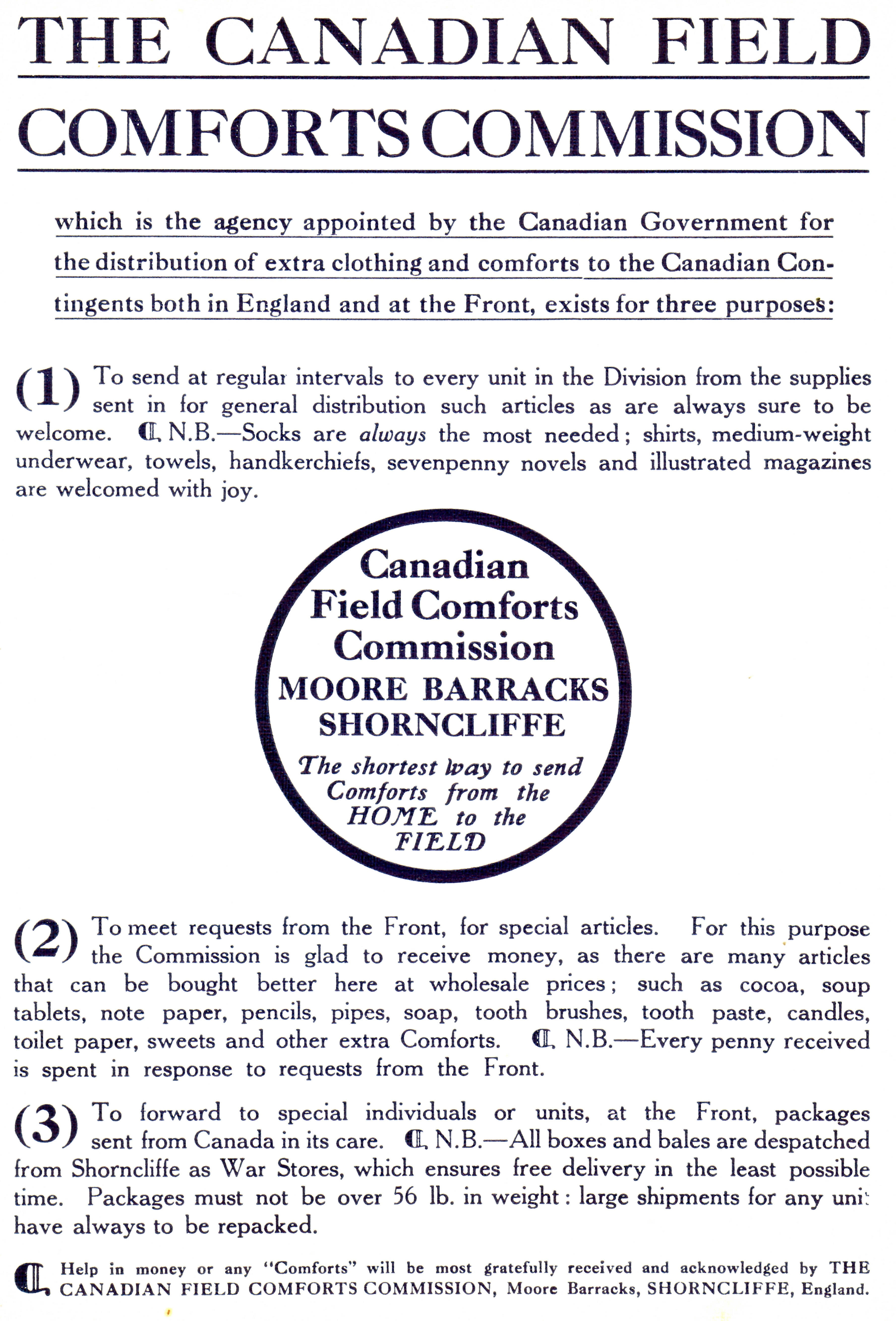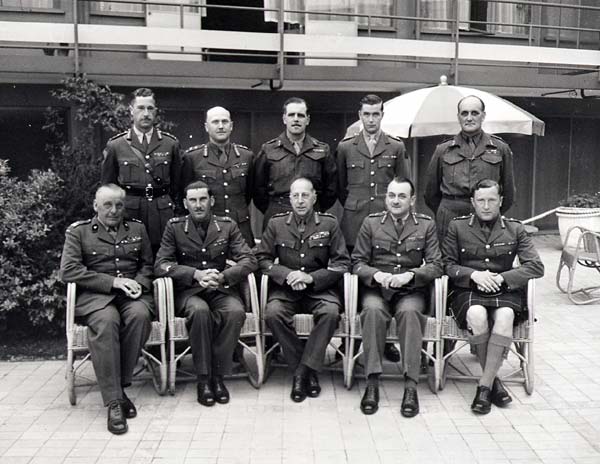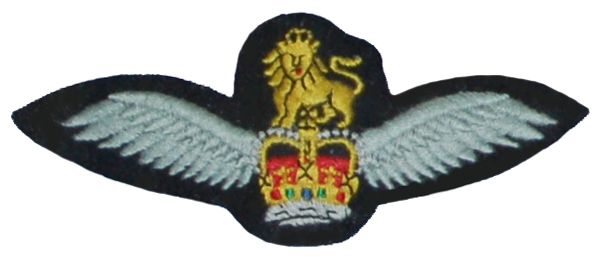|
Geoffrey Walsh
Lieutenant-General Geoffrey Walsh, CBE, DSO, CD (19 August 1909 – 3 April 1999) was a Canadian soldier and Chief of the General Staff, the head of the Canadian Army from 1961 – 1964; Walsh was the last officer to hold this appointment as it was eliminated in 1964 as part of the reorganization of Canada's military in the lead-up to the 1968 unification of the Canadian Forces. The most senior army appointment after unification, the Commander of Mobile Command, had a much-reduced scope of authority.Peter Kasurak, A National Force: The Evolution of Canada's Army, 1950-2000, (Vancouver and Toronto: UBC Press, 2013), pp. 95-99. Military career Educated at St Catherine's Collegiate School, Walsh was commissioned into the Royal Canadian Engineers in 1930. He served in World War II with the Canadian Army Service Force and took part in the Spitsbergen Raid in 1941. In 1942 he transferred to the 1st Canadian Division and fought in Sicily and Italy. In 1944 he was made Comman ... [...More Info...] [...Related Items...] OR: [Wikipedia] [Google] [Baidu] |
Brantford
Brantford ( 2021 population: 104,688) is a city in Ontario, Canada, founded on the Grand River in Southwestern Ontario. It is surrounded by Brant County, but is politically separate with a municipal government of its own that is fully independent of the county's municipal government. Brantford is situated on the Haldimand Tract, traditional territory of the Neutral, Mississauga, and Haudenosaunee peoples. The city is named after Joseph Brant, an important Mohawk leader, soldier, farmer and slave owner. Brant was an important Loyalist leader during the American Revolutionary War and later, after the Haudenosaunee moved to the Brantford area in Upper Canada. Many of his descendants, and other First Nations people, live on the nearby Six Nations of the Grand River reserve south of Brantford; it is the most populous reserve in Canada. Brantford is known as the "Telephone City" as the city's famous resident, Alexander Graham Bell, invented the first telephone at his father's ... [...More Info...] [...Related Items...] OR: [Wikipedia] [Google] [Baidu] |
1st Canadian Division
The 1st Canadian Division (French: ''1re Division du Canada'' ) is a joint operational command and control formation based at CFB Kingston, and falls under Canadian Joint Operations Command. It is a high-readiness unit, able to move on very short notice, and is staffed and equipped to meet Canada’s military objectives to counter any potential threat. Formed during the First World War in August 1914, the 1st Canadian Division was a formation of the Canadian Expeditionary Force. The division contained a cavalry squadron and a cyclist company, three infantry brigades (the 1st, 2nd and 3rd Canadian Infantry Brigades, each of four battalions), representing all parts of Canada, three field artillery brigades (roughly equivalent to modern regiments) armed with 18-pounders and engineers, together with elements of the Army Service Corps and the Army Medical Corps. The total war establishment of the Division was 17,873 all ranks, with 4,943 horses. /sup> During its service in the Firs ... [...More Info...] [...Related Items...] OR: [Wikipedia] [Google] [Baidu] |
Robert Moncel
Robert William Moncel, (April 9, 1917 – December 10, 2007) was a Canadian army officer. Moncel was Lieutenant-General of the Canadian Army and former Vice Chief of the Defence Staff. He was the youngest general officer in the Canadian Army when promoted to Brigadier on August 17, 1944, at the age of 27. Early life Born in Montreal, Quebec, he was educated at Selwyn House School, Bishop's College School and McGill University. He served as an officer with the Victoria Rifles of Canada. World War II When World War II broke out, Moncel went to Europe with the Royal Canadian Regiment (RCR). In May 1940, he was ordered along with the RCR to France to reinforce the British Expeditionary Force facing the German ''blitzkrieg''. Soon however, Lieutenant Moncel, who commanded a Bren gun carrier platoon, was ordered to retreat to the French coast. When being evacuated, he was ordered to destroy his equipment to save it from German hands, but Moncel, with his cool judgement, managed ... [...More Info...] [...Related Items...] OR: [Wikipedia] [Google] [Baidu] |
Jean Victor Allard
General Jean Victor Allard (12 June 1913 – 23 April 1996) was the first French Canadian to become Chief of the Defence Staff, the highest position in the Canadian Forces, from 1966 to 1969. He was also the first to hold the accompanying rank of general. Military career Allard served as an officer in the Régiment de Trois-Rivières prior to World War II. After the outbreak of war in 1939, he was attested to the Canadian Active Service Force and promoted to the rank of major. When the active component of his regiment was redesignated to become an Anglophone armoured unit, he requested a transfer to the infantry and became the Deputy Commanding Officer of Régiment de la Chaudière in England. In December 1943, he became the Commanding Officer of the Royal 22e Régiment in Italy. He was in command of the 6th Canadian Infantry Brigade at the end of the war in Germany, in the rank of brigadier (now brigadier-general). He was awarded the Distinguished Service Order (DSO) on th ... [...More Info...] [...Related Items...] OR: [Wikipedia] [Google] [Baidu] |
Samuel Findlay Clark
Lieutenant General Samuel Findlay Clark CBE, CD (1909–1998) was a senior Canadian Army officer who became Chief of the General Staff (CGS), the professional head of the Canadian Army, from 1958 until 1961. Education Clark received his early education in Winnipeg and attended the University of Manitoba, graduating with a degree in electrical engineering (BSc EE) in 1932.Robert Engen, "Army Biography," Canadian Army Journal, Volume 11, No.2, Summer 2008 (pp. 93–95). He subsequently attended the to obtain a degree in mechanical engineering (BSc ME) in ... [...More Info...] [...Related Items...] OR: [Wikipedia] [Google] [Baidu] |
Vice Chief Of The Defence Staff (Canada)
The Vice Chief of the Defence Staff (VCDS; french: Vice-chef d’état-major de la Défense) is the second most senior member of the Canadian Armed Forces, reporting to the Chief of the Defence Staff (CDS) as well as the Deputy Minister of National Defence. The Directorate General Executive Coordination, the Canadian Forces Provost Marshal, the National Cadet and Junior Canadian Rangers Support Group and several other departments report to the VCDS, who is appointed by the CDS. Recent history Vice-Admiral Mark Norman was temporarily relieved as VCDS on January 13, 2017, due to an ongoing investigation by the Royal Canadian Mounted Police. As a temporary replacement, Vice-Admiral Ron Lloyd was appointed the duties of VCDS on an acting basis, and he was subsequently replaced by Lieutenant-General Alain Parent on May 30, 2017. On July 16, 2018, Lieutenant-General Paul Wynnyk was named Vice Chief of the Defence Staff. On July 9, 2019, Wynnyk announced his retirement after he cl ... [...More Info...] [...Related Items...] OR: [Wikipedia] [Google] [Baidu] |
Operation Overlord
Operation Overlord was the codename for the Battle of Normandy, the Allied operation that launched the successful invasion of German-occupied Western Europe during World War II. The operation was launched on 6 June 1944 (D-Day) with the Normandy landings. A 1,200-plane airborne assault preceded an amphibious assault involving more than 5,000 vessels. Nearly 160,000 troops crossed the English Channel on 6 June, and more than two million Allied troops were in France by the end of August. The decision to undertake a cross-channel invasion in 1944 was taken at the Trident Conference in Washington in May 1943. General Dwight D. Eisenhower was appointed commander of Supreme Headquarters Allied Expeditionary Force, and General Bernard Montgomery was named commander of the 21st Army Group, which comprised all the land forces involved in the invasion. The coast of Normandy of northwestern France was chosen as the site of the invasion, with the Americans assigned to land at sect ... [...More Info...] [...Related Items...] OR: [Wikipedia] [Google] [Baidu] |
Guy Simonds
Lieutenant-General Guy Granville Simonds, (April 23, 1903 – May 15, 1974) was a senior Canadian Army officer who served with distinction during World War II. Acknowledged by many military historians and senior commanders, among them Sir Max Hastings and Field Marshal Sir Bernard Montgomery, as one of the best Canadian generals of the war, Simonds, after serving the first few years of the Second World War mainly as a staff officer, commanded the 1st Canadian Infantry Division with distinction in Sicily and Italy from July 1943 until January 1944, and later II Canadian Corps during the Battle of Normandy from June−August 1944 and throughout the subsequent campaign in Western Europe from 1944, towards the end of which he temporarily commanded the First Canadian Army during the Battle of the Scheldt, until victory in Europe Day in May 1945. The historian J. L. Granatstein states the following about Simonds: "No Canadian commander rose higher and faster in the Second World War, ... [...More Info...] [...Related Items...] OR: [Wikipedia] [Google] [Baidu] |
II Canadian Corps
II Canadian Corps was a corps-level formation that, along with I (British) Corps (August 1, 1944 to April 1, 1945) and I Canadian Corps (April 6, 1943 to November 1943, and April 1, 1945 until the end of hostilities), comprised the First Canadian Army in Northwest Europe during World War II. Authorization for the formation of the corps headquarters became effective in England on January 14, 1943. Over March 4–12, 1943 the new Canadian corps was involved in Exercise Spartan, a large-scale training exercise in southern England. This exercise revealed weaknesses in the command of both the new Corps and of First Canadian Army, and this led directly to several changes in leadership over the subsequent year. The first commander of II Canadian Corps was Lieutenant-General Ernest William Sansom, effective January 15, 1943. Concerns over his leadership abilities and health caused Sansom to be replaced by Lieutenant-General Guy Simonds on January 29, 1944. Simonds led the corps for th ... [...More Info...] [...Related Items...] OR: [Wikipedia] [Google] [Baidu] |
4th Canadian (Armoured) Division
The 4th Canadian Division is a formation of the Canadian Army. The division was first created as a formation of the Canadian Corps during the First World War. During the Second World War the division was reactivated as the 4th Canadian Infantry Division in 1941 and then converted to armour and redesignated as the 4th Canadian (Armoured) Division. Beginning in 1916 the division adopted a distinctive green-coloured formation patch as its insignia. In 2013 it was announced that Land Force Central Area would be redesignated 4th Canadian Division. It is currently responsible for Canadian Army operations in the Canadian province of Ontario and is headquartered at Denison Armoury in Toronto. First World War The 4th Canadian Division was formed in Britain in April 1916 from several existing units and others scheduled to arrive shortly thereafter. Under the command of Major-general David Watson, the Division embarked for France in August of that year where they served both in the West ... [...More Info...] [...Related Items...] OR: [Wikipedia] [Google] [Baidu] |





